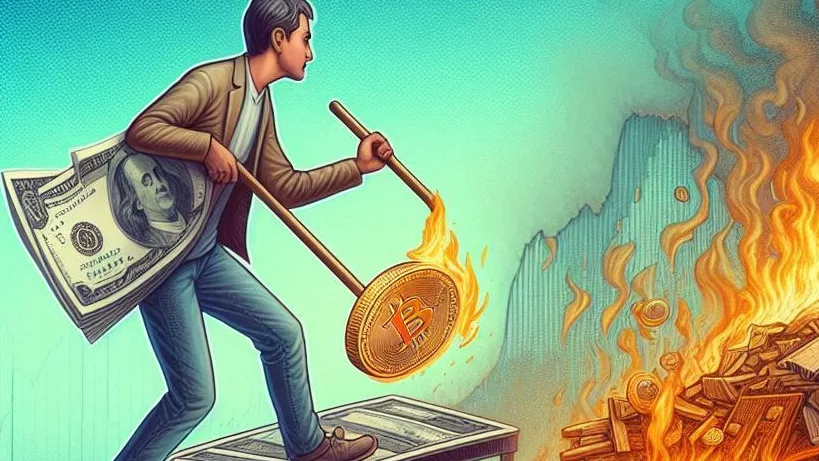
Tether’s USDt, the largest stablecoin by market cap, has long been seen as a key player in the cryptocurrency market. For years, the minting and burning patterns of USDT have seemed to follow Bitcoin’s price movements. When Bitcoin enters a bull run, Tether often mints large amounts of USDT, and when Bitcoin experiences a market correction, burns tend to occur. This back-and-forth between minting and burning could be a reflection of how liquidity flows into and out of the crypto market.
Looking at data from Whale Alert, it’s clear that large minting events usually precede Bitcoin price surges. For instance, in late 2024, we saw billions of USDT minted just before Bitcoin’s price shot up from $66,700 to over $106,000. While this often seems to happen before Bitcoin’s rally, it’s likely a response to growing demand rather than a deliberate move to boost the price. USDT acts almost like a marker of market activity, with its minting reflecting an inflow of capital into the ecosystem.
However, experts, like crypto analyst Mads Eberhardt, caution against overestimating this correlation. While there’s certainly been a connection between USDT and Bitcoin for a long time, the increasing use of stablecoins in non-crypto industries may cause this link to weaken. Additionally, Ki Young Ju from CryptoQuant points out that Bitcoin’s liquidity is now largely driven by institutional players, such as Bitcoin ETFs and over-the-counter markets, rather than stablecoins like USDT.
Tether’s burning process paints a different picture. When USDT is burned — meaning taken out of circulation — it tends to happen after or during Bitcoin’s price drops. This was especially noticeable in early 2025, after Bitcoin’s price peaked above $106,000 and then fell. Large burns followed Bitcoin’s decline, but unlike mints, burns often come after the price drop has already started. So, while mints may signal a potential price surge, burns tend to be more of a confirmation of a market downturn.
Despite these recurring patterns, it’s important to remember that many factors influence Bitcoin’s price beyond USDT. Market sentiment, global economic factors, and even regulatory changes can all play a role in price movements. The rise of institutional investments in Bitcoin and the increasing use of ETFs also mean that USDT may no longer have the same influence on Bitcoin’s price. Regulatory shifts, like the EU’s MiCA framework or U.S. stablecoin legislation, could further reshape how stablecoins operate, potentially reducing USDT’s role in market dynamics. These regulatory frameworks may also have a profound effect on the overall market liquidity and could lead to a more standardized, transparent approach to stablecoin usage. This may reduce the unpredictability and volatility often linked to USDT’s issuance.
Additionally, as new stablecoins such as USDC continue to grow in adoption due to their strong compliance with regulatory standards, USDT may face increased competition. USDC’s transparency and regulatory posture make it more appealing, especially to institutional players who are sensitive to legal compliance. As these competing stablecoins gain traction, the dominance of USDT in the market could wane, further diluting its ability to signal price movements in Bitcoin.
In conclusion, while Tether’s minting and burning trends have provided valuable insights into crypto liquidity, their relationship with Bitcoin’s price movements may be evolving. As stablecoin competition increases and new regulations are introduced, USDT may not be as reliable a gauge for Bitcoin’s price direction in the future. The landscape is shifting, and USDT’s once-clear role in reflecting Bitcoin’s market sentiment may no longer hold the same weight. The integration of institutional money into the market, along with rising competition from regulatory-compliant stablecoins, could all contribute to a new era in the stablecoin and Bitcoin market dynamics. The influence of USDT on Bitcoin’s price may diminish as these changes take hold, making the correlation between the two less predictable over time.

Get the latest Crypto & Blockchain News in your inbox.